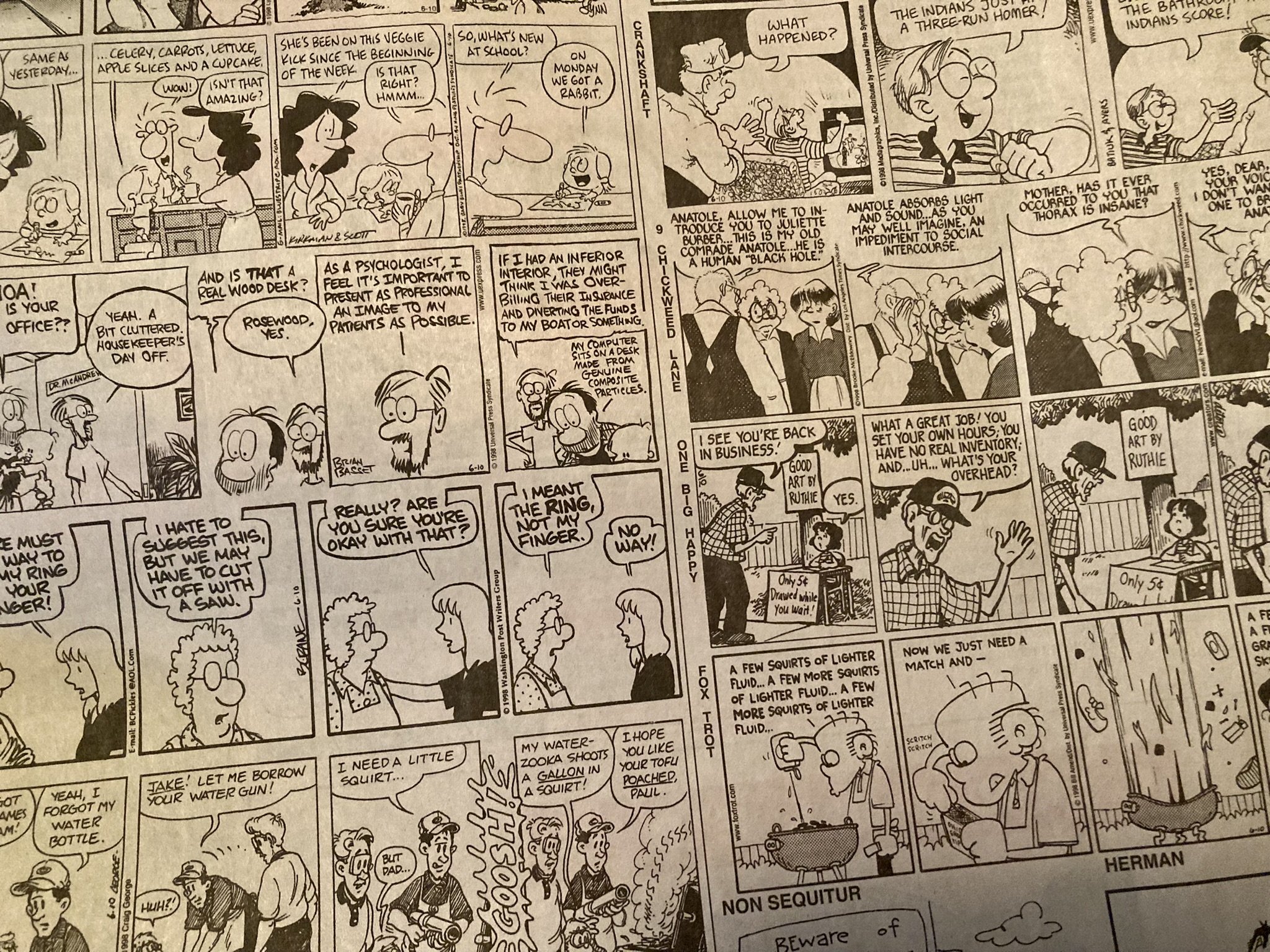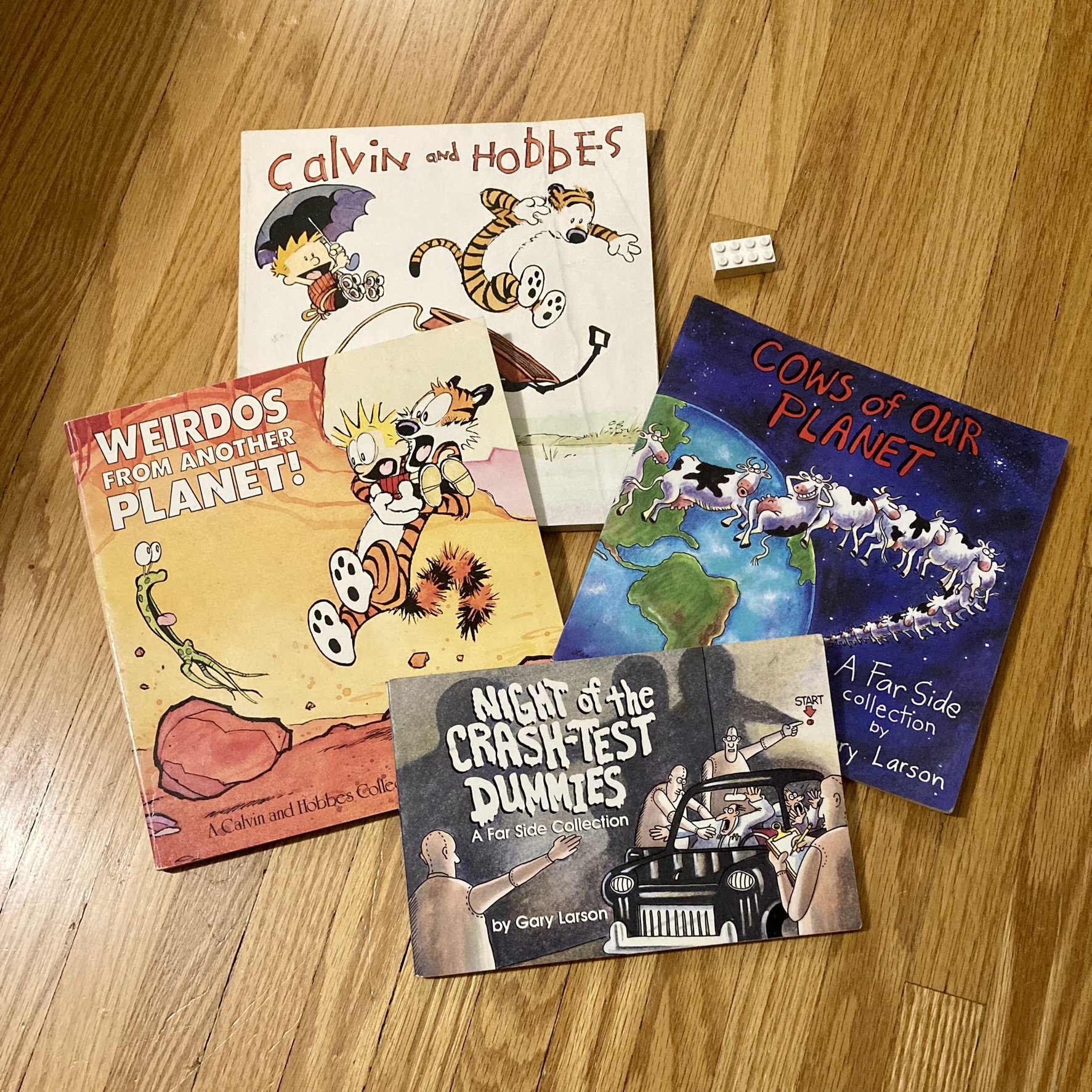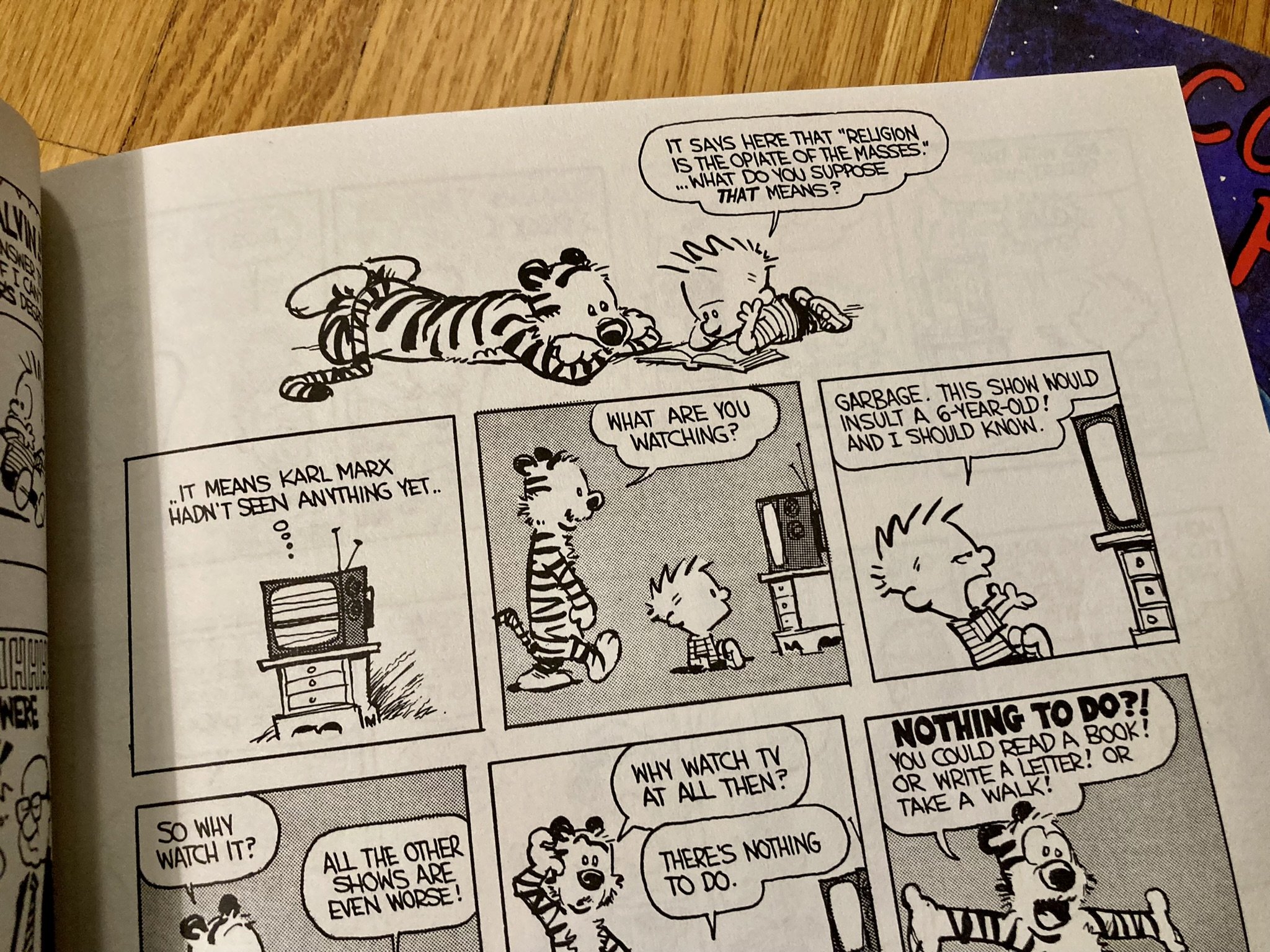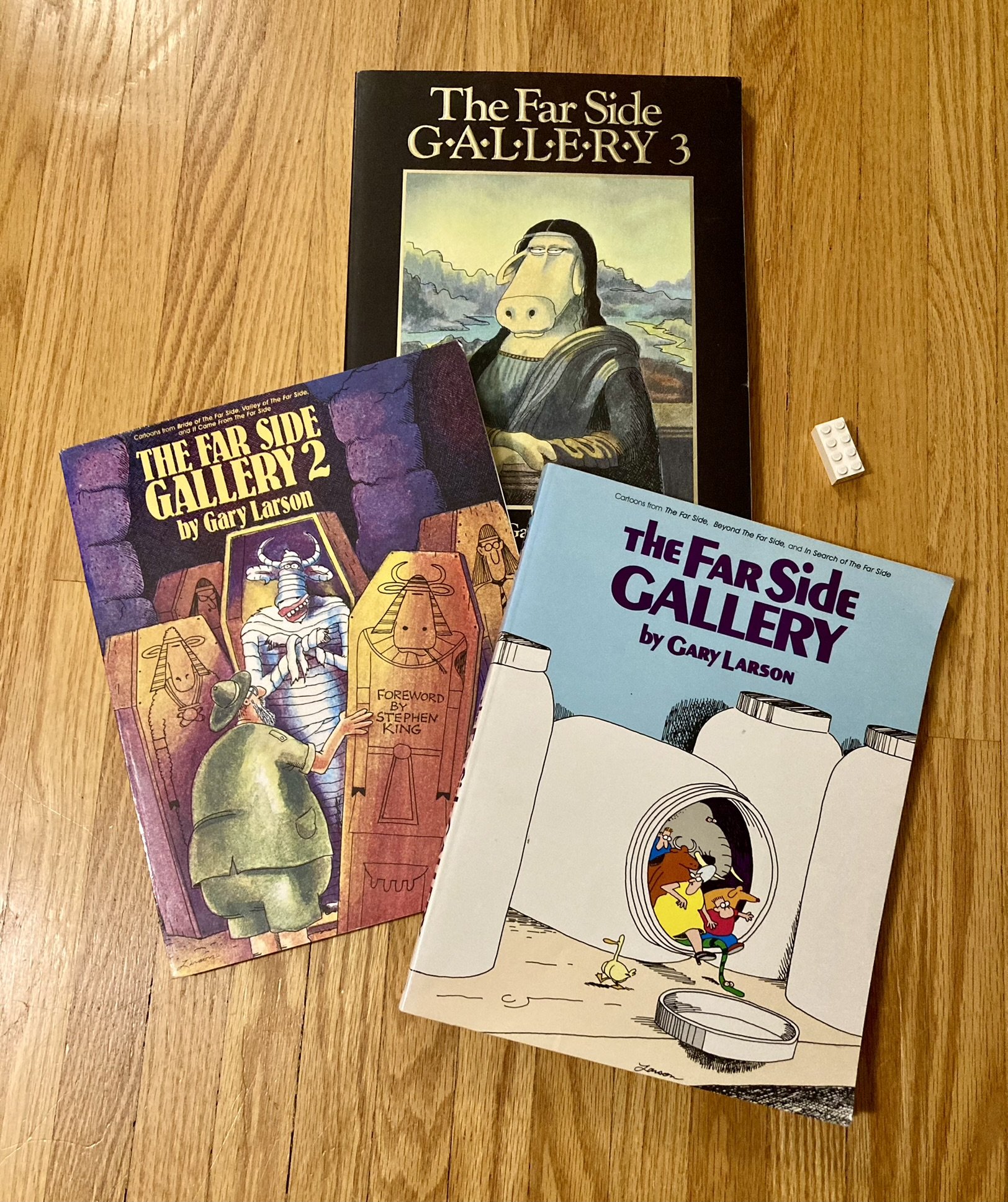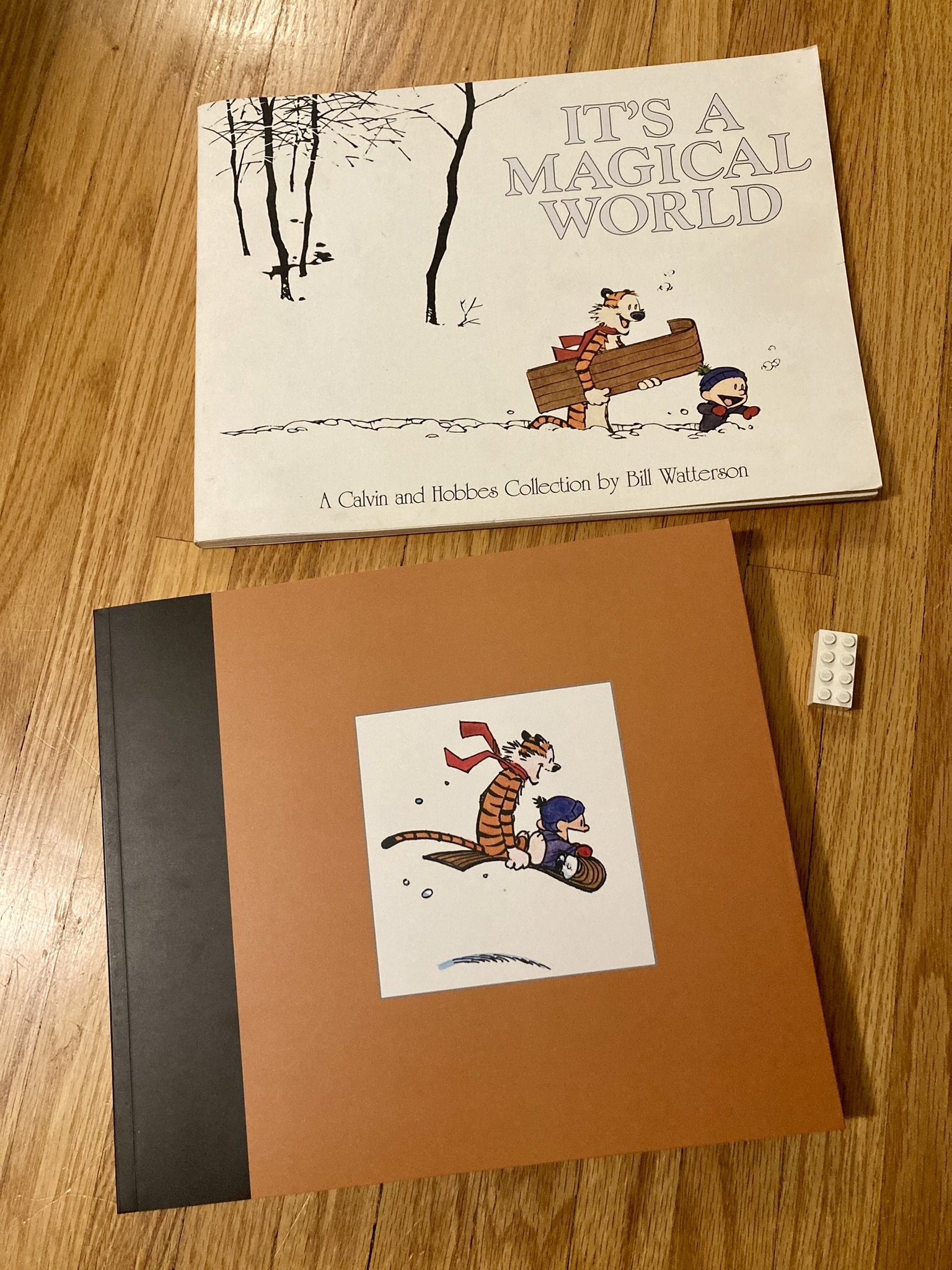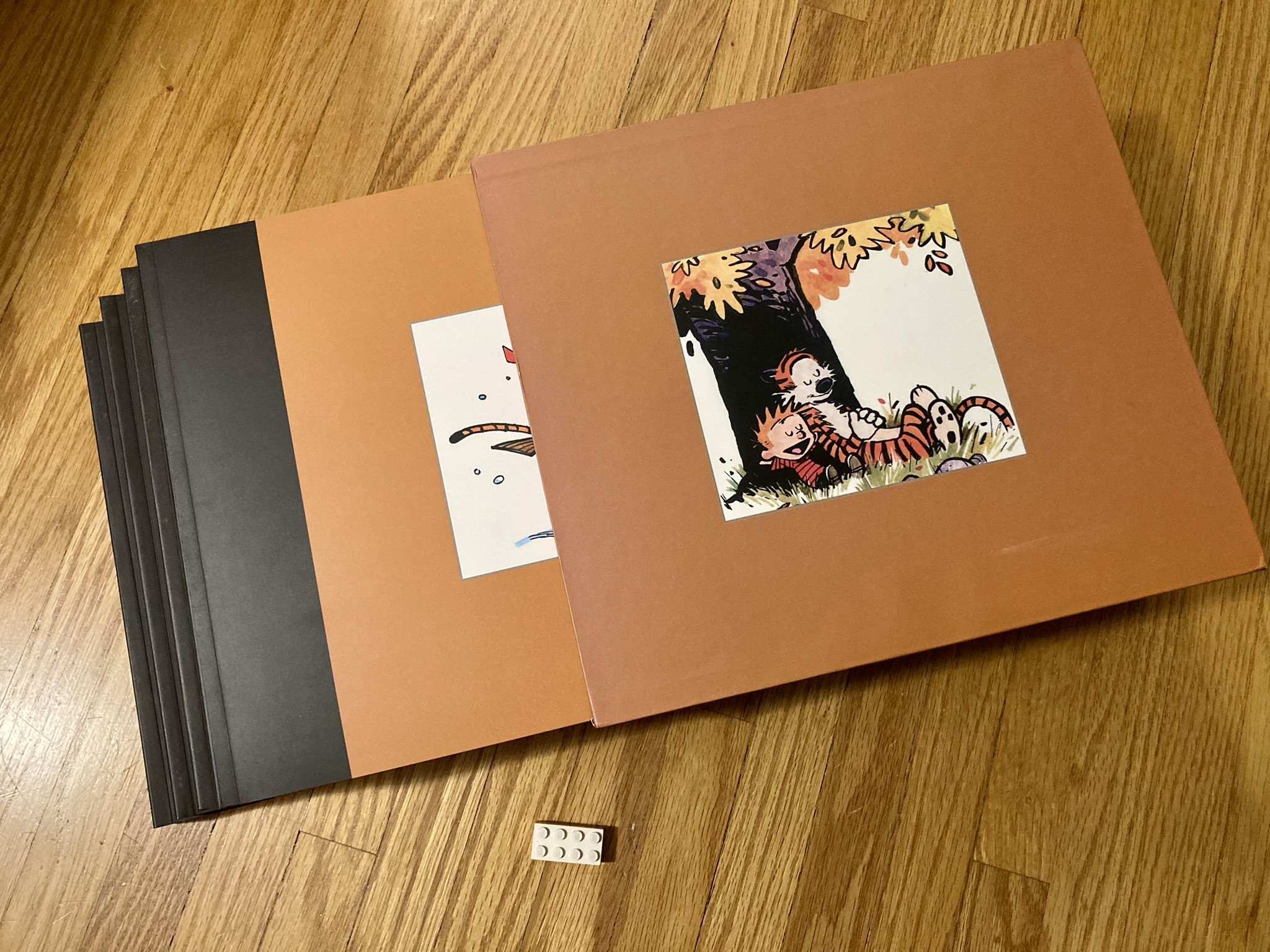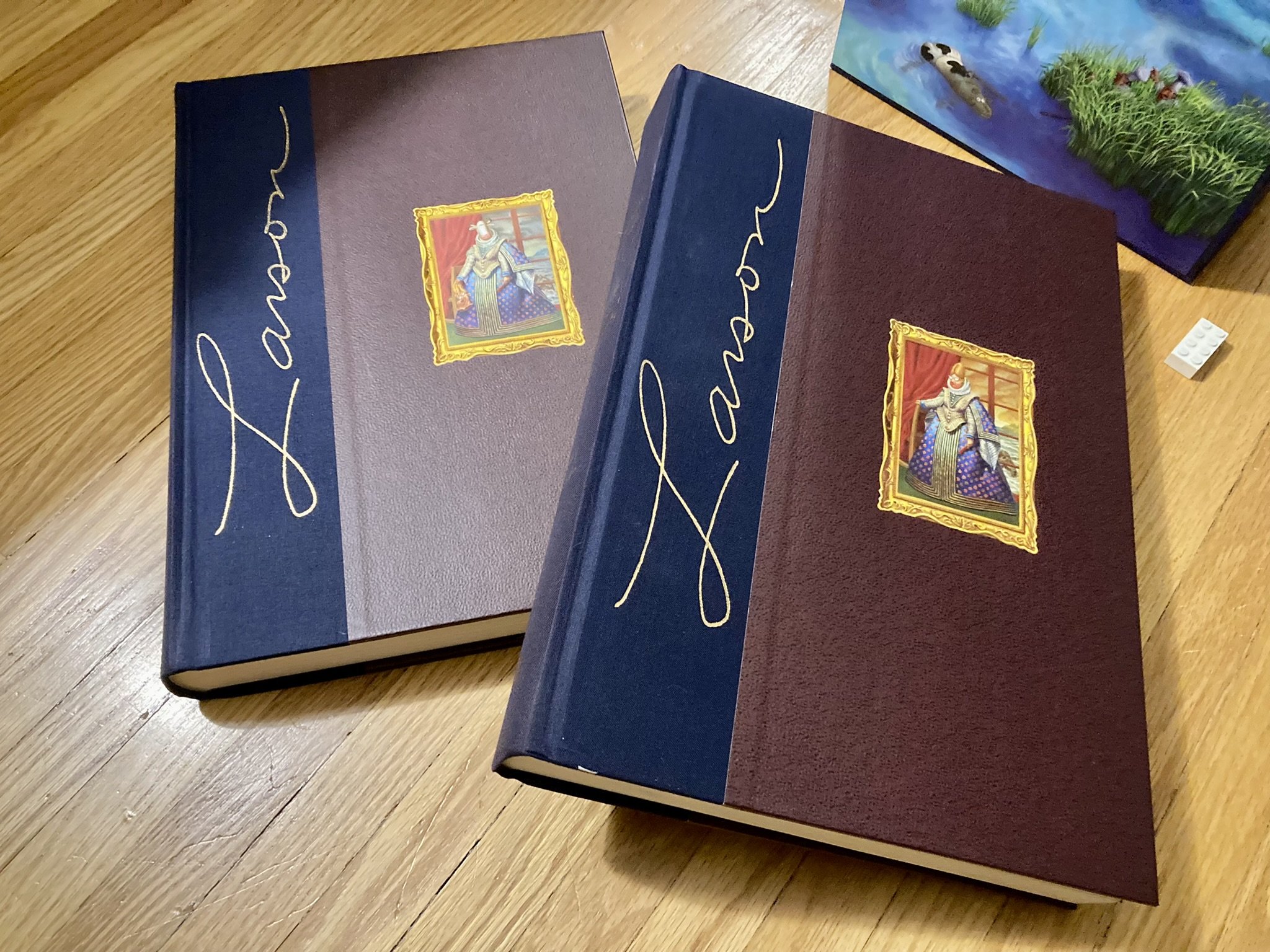Social climbing
Once upon a time I had a shoebox full of favourite comic strips that I had diligently cut out of the newspaper… Calvin & Hobbes, The Far Side, Bloom County, to name but a few. Somewhere over time and over moves, I lost that box, much to my sadness. But just imagine strips like these, cut out into literal strips:
Then if the strip got popular enough, some publisher would come along and reprint them into a little book, like these:
Unlike compilation by fancy box, these collection were ‘proper’ books, sometimes not much bigger than the digest compilations found at the grocery store, but assigned an ISBN rather than a UPC and sold in ‘proper’ bookstores.
Inside, the strips were reprinted bigger and sharper and on better paper than the original newsprint upon which these comics first appeared.
So to callback to the philosophical foundations of our Comic as Object Project, it was a step up both in quality of paratext and measure of social capital.
Then if the comics continued to be popular, the smaller books would be combined and reprinted into bigger books…
Now if you were still popular ten years on, out would come the tenth anniversary compilations…
And every once in a while, a comic strip gets the absolute royal treatment… slipcases, multiple volumes, the complete collection…
As the kid who once cut these comics out of the paper, these silly drawings for children, from newspapers that would otherwise next line birdcages or be used as packing paper… each upgrade in format, each accrual of symbolic capital, each step up the social ladder for these comics was a step up for the loyal readers too, a validation of their taste in humour, and a reflection of their willingness to translate social capital into economic capital for publishers.
I’ve wondered what would it be like to first encounter these comics in these ‘final’ complete forms. To first read Far Side cartoons in a ten-pound volume to rival a church bible.
Interestingly, both The Complete Calvin and Hobbes and The Complete Far Side were published in both hardcover and softcover editions. In choosing to acquire the hardcover Complete Far Side but the softcover Complete Calvin and Hobbes, the physicality of each version played a major factor.
For The Complete Calvin and Hobbes, there was a definite nostalgia factor of wanting to read the complete works in the same form factor in which I first encountered the books.
But for The Complete Far Side, the sheer absurdity of such a heavy and ornate set of hardcover volumes, comparable in size to a Compact Oxford English Dictionary (and much more elegantly bound than my editions of the same), being the vessel for such absurd humour seemed exactly the right match of form and function…
At long last, the form factor this exceptional art deserves…
Happy reading!
– Winston


